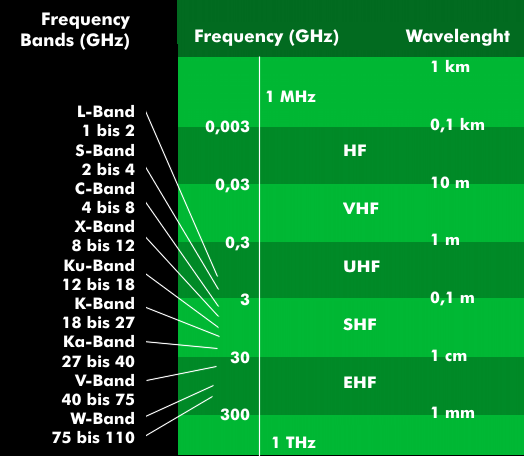microwave (MW)
Microwaves are electromagnetic waves with frequencies from 1 GHz to 100 GHz that are used in microwave technology. Microwaves have wavelengths from about 30 cm to 3 mm. This means that microwaves include both centimeter waves and millimeter waves.
The data about the microwave range vary considerably. There are data in which the lower frequency of the microwave range is indicated with 300 MHz, with which it would connect this directly to the high frequency range. The upper frequencies vary between 20 GHz and 300 GHz.
The same applies to the different frequency bands, which can vary depending on the application. Therefore, the frequency bands for satellite transmission differ from those for radar systems or waveguides.
Microwaves have the same physical behavior as light or other electromagnetic waves. They propagate in space at the speed of light and transport energy. The effects of diffraction, refraction, interference, reflection and polarization correspond to those of light. Depending on their molecular structure, microwaves can be reflected or absorbed by materials and can also radiate through materials. Metals reflect microwaves; ceramics, glass, and plastics, on the other hand, are penetrated by them; and polar materials, human tissue, and food particles absorb them. Microwaves are generated by klystrons, traveling wave tubes and magnetrons.


